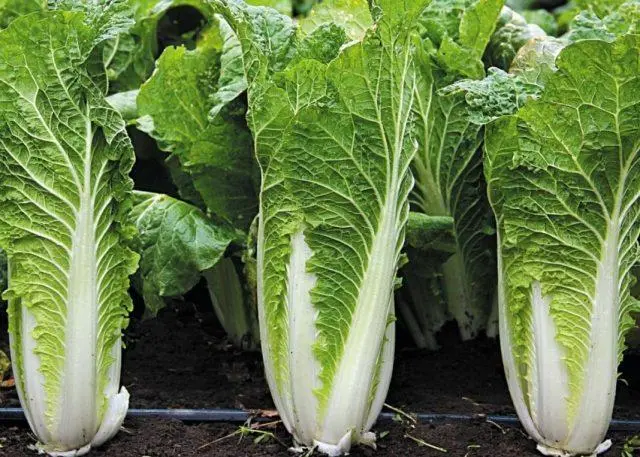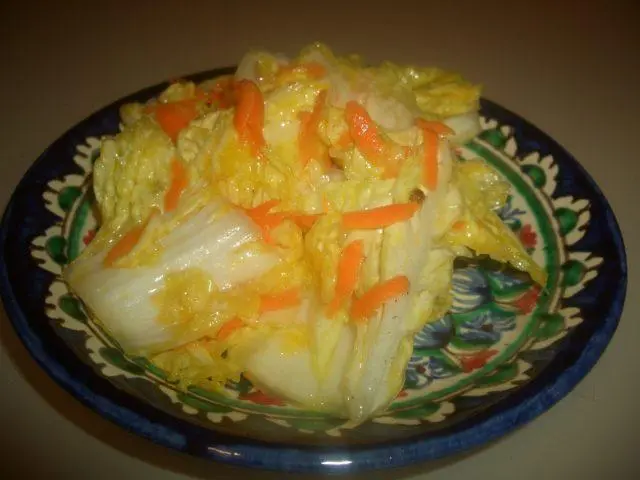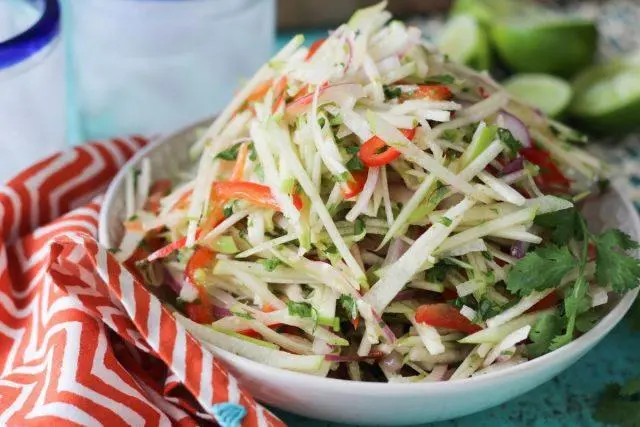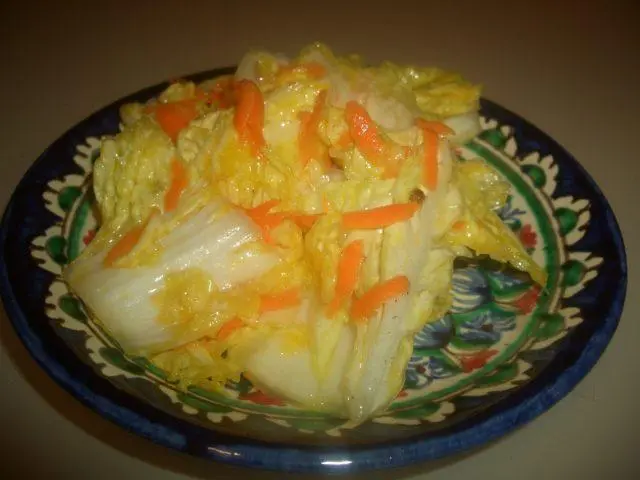Contents
At first glance, it is correct to determine whether Beijing cabbage or white cabbage is in front of him, even a non-specialist in the field of botany is capable of. Despite the fact that these cultures are close “relatives”, the difference in “appearance” is obvious. Belonging to the same family is manifested in the similarity of the chemical composition and, as a result, the benefits to human health.
The difference between Beijing cabbage and white cabbage
In fact, the external similarity is limited to the presence of a head of cabbage. It is very easy to determine from it whether Peking cabbage (sometimes erroneously referred to as Chinese) or white cabbage.
Appearance
Both cultures are plants with a two-year development cycle. Although gardeners are “interested” only in the first season, when a head is formed from gradually “curling” leaves.
In the white-headed rosette, the rosette is always “raised” above the ground, although the height of the stem may vary. The shape of the leaves of a particular variety or hybrid can be round, oval, elongated, even cone-shaped, the edges are even. To the touch they are dense, even leathery, elastic. The leaf plates are painted green, covered with a layer of “wax” coating of a grayish or bluish-purple hue. The veins (especially the central one) are convex, very clearly defined.

The shape of the heads varies from almost spherical to flattened and domed.
Beijing cabbage (aka lettuce) differs from ordinary white cabbage in that it does not have a stem, medium-sized elongated heads of cabbage practically stand on the ground. Its leaves are elongated, thin and delicate to the touch, with a “bubbly” surface, the edge is wavy or cut with teeth. The veins are also clearly visible, but the difference with white cabbage is that they are wide and flat.

Most varieties and hybrids have green leaf plates, but they can be inky purple, yellowish, and almost white.
Head sizes determine the difference in yield. The minimum weight of white cabbage is 0,5-0,7 kg. Average – 1,5-2 kg. In many varieties and hybrids (especially late-ripening ones), it reaches 3-4 kg. Compared to the “Beijing” (0,5-1 kg), the difference in weight is obvious. There are also differences in the density and juiciness of heads of cabbage on the cut, elasticity when pressed.
Chemical composition and calorific value
The calorie content of Beijing cabbage is only 16 kcal per 100 g. And the difference with white cabbage (25 kcal for the same mass) is insignificant, but still it is. The heads of both cultures are more than 90% water, practically do not contain fats, and are almost identical in terms of the presence of proteins. But there are more carbohydrates in white cabbage – 5,8 g versus 2,2 g (mainly due to the presence of natural sugars).
The difference in chemical composition is minimal. Both crops are extremely beneficial for health as the leaves contain:
- vitamins A, C, E, K, the whole group B;
- minerals (phosphorus, potassium, sodium, calcium, magnesium, iron, zinc, manganese, copper, selenium);
- biologically active compounds with antioxidant properties (lutein, thiocyanate, isothiocyanate, zeaxanthin, sulforaphane).

The combination of low calorie content and rich chemical composition is always in demand by those who follow a diet.
Application
In principle, white and Beijing cabbage in cooking have almost identical uses. The almost complete lack of difference between them is confirmed by their interchangeability in the vast majority of culinary recipes.
Both varieties can be added to:
- fresh vegetable salads that are “combined” with other ingredients (boiled eggs, grapes, apples, herbs, cheese, seafood, chicken meat);
- “green” smoothies;
- soups;
- second courses (stuffed cabbage from Beijing cabbage is much easier to cook than from white cabbage);
- complex vegetable and “one-component” side dishes;
- pastry as a filling.

Pickled Beijing cabbage looks unusual, but there is practically no difference in taste with white cabbage
Which cabbage is more useful: white or Beijing
The difference in the chemical composition of white and Beijing cabbage is minimal. This is backed up by scientific studies by nutritionists all over the world with similar results.
White cabbage is slightly “ahead” of “Peking” in terms of fiber and pectin content due to the texture of the leaves. Also, the difference can be considered a small “advantage” in the presence of vitamins K and C. The main “trick” is that it is a source of an extremely rare vitamin U.
But Chinese cabbage is easier and faster to digest raw, without leaving a feeling of heaviness in the stomach. It is “ahead” of the white one in terms of the content of vitamin A, B6, D and folates.
Conclusion
Determining whether it is Beijing cabbage or white cabbage is extremely simple – just one glance at the head is enough. Of course, there is a superficial similarity due to close “kinship”, but the difference is much more obvious. It is impossible to say unequivocally that one or the other is healthier or tastier: the chemical composition and calorie content are almost identical, as are the options for use in cooking.









